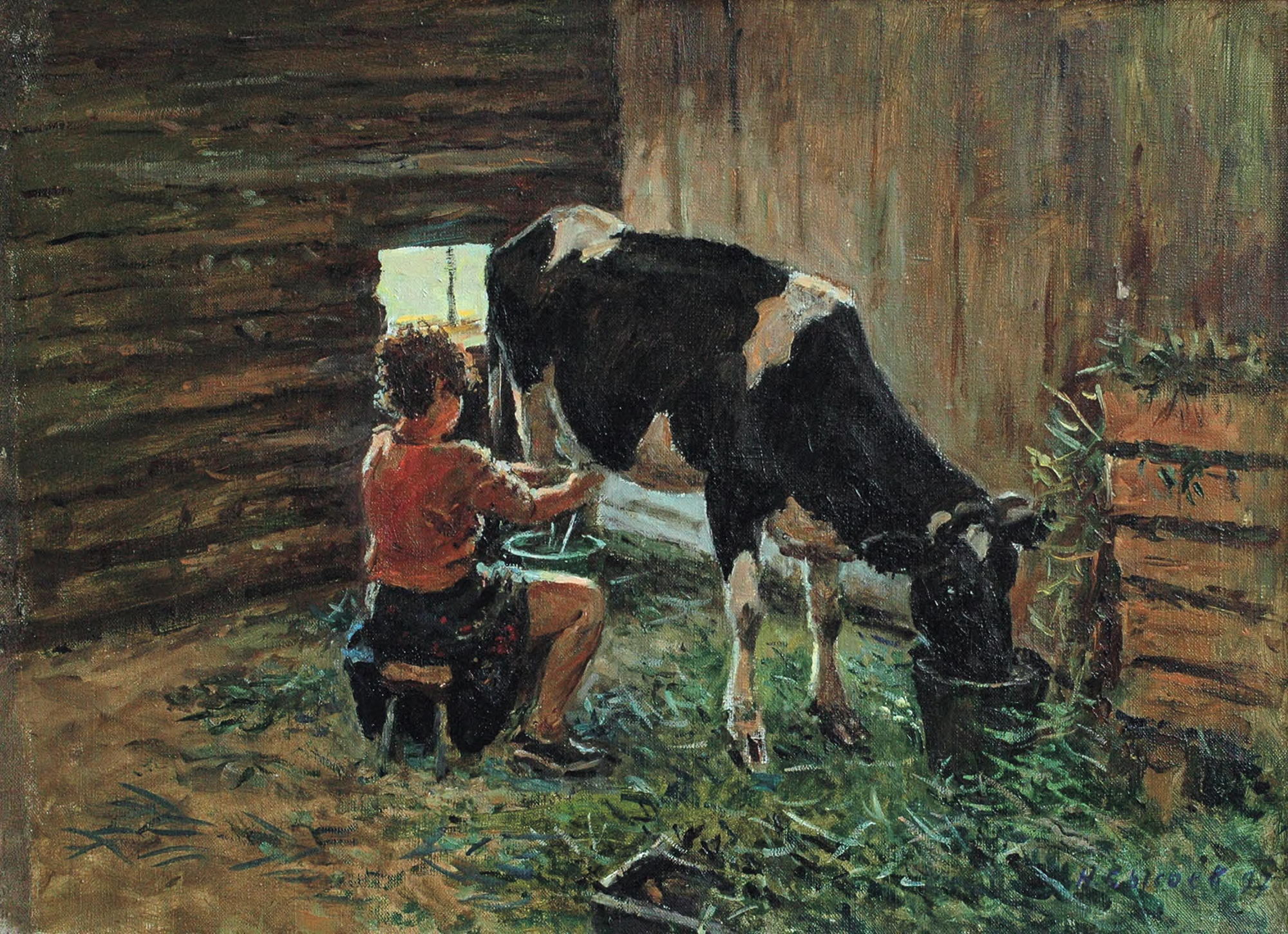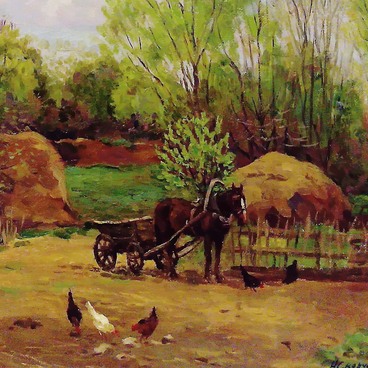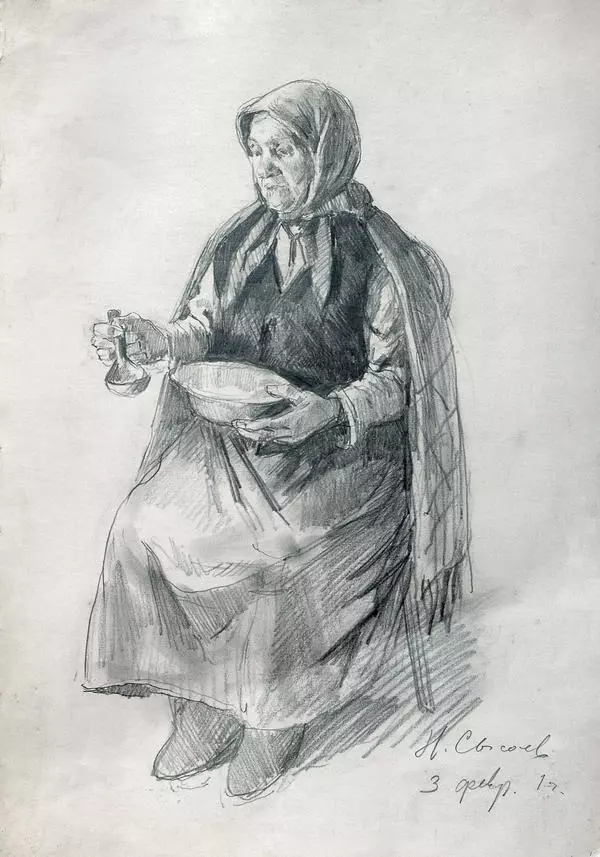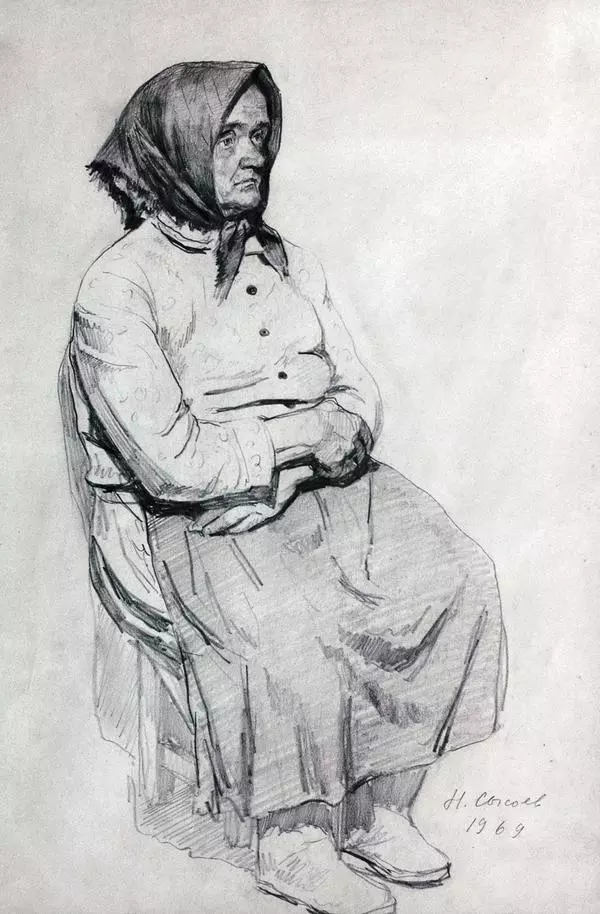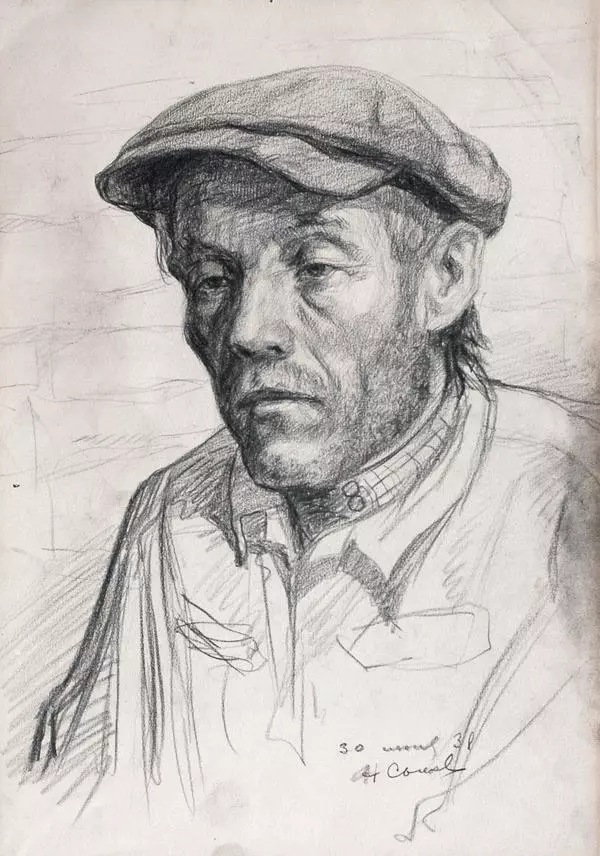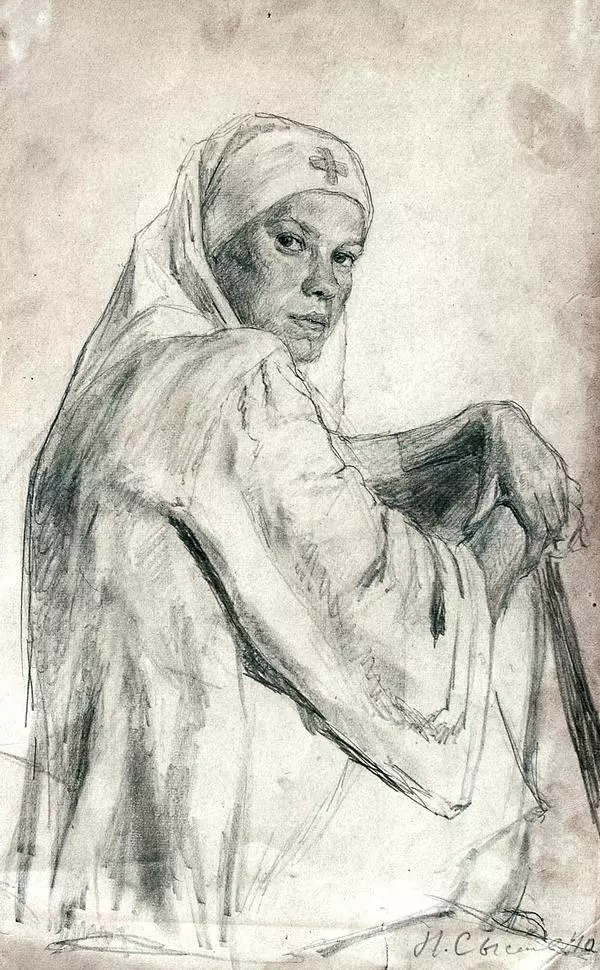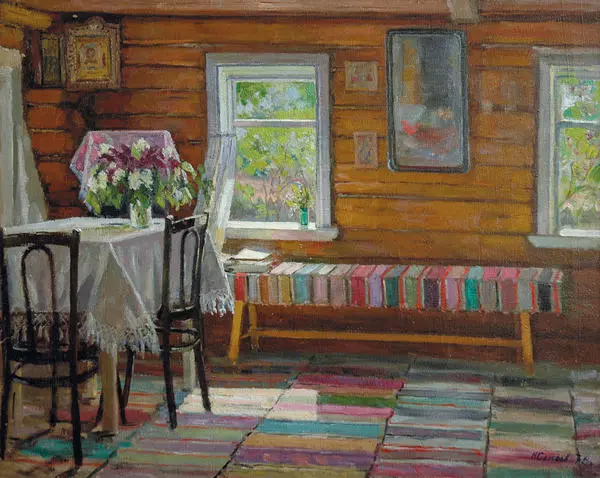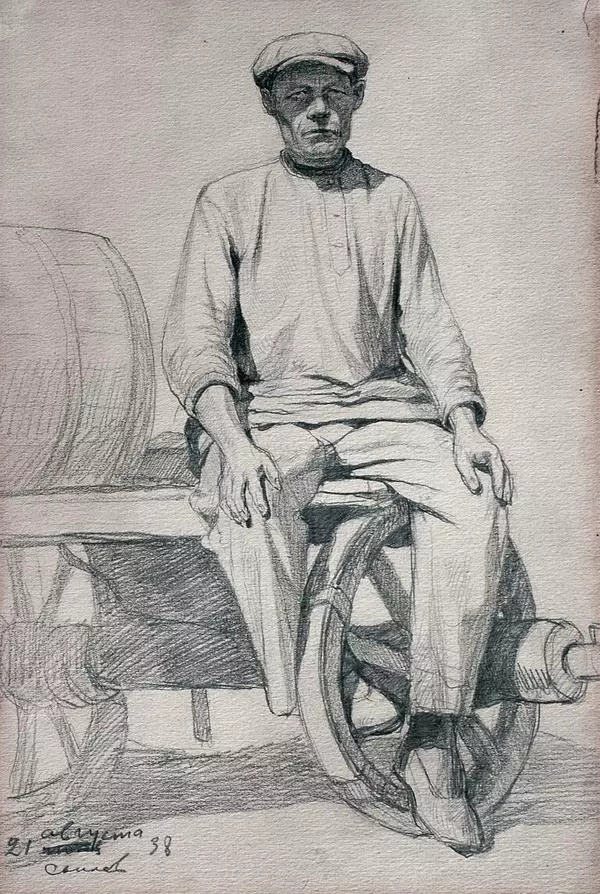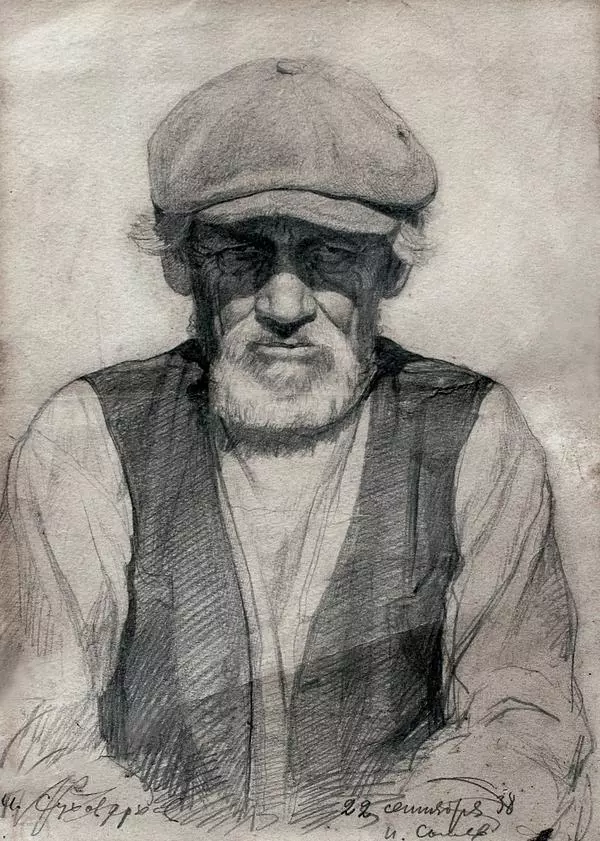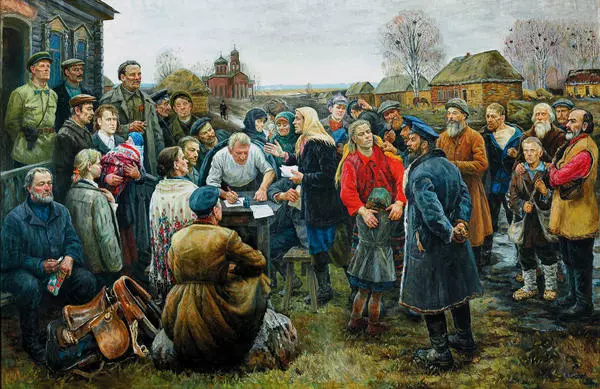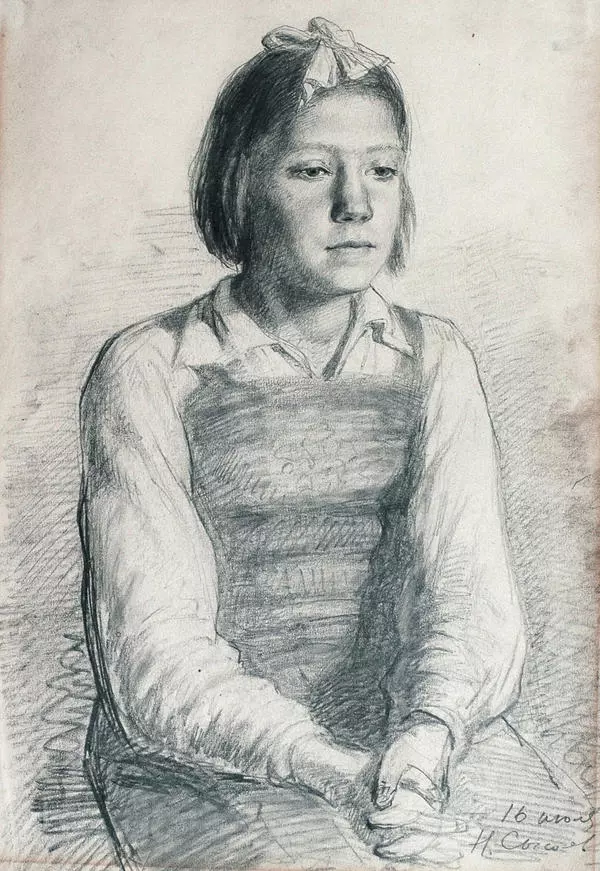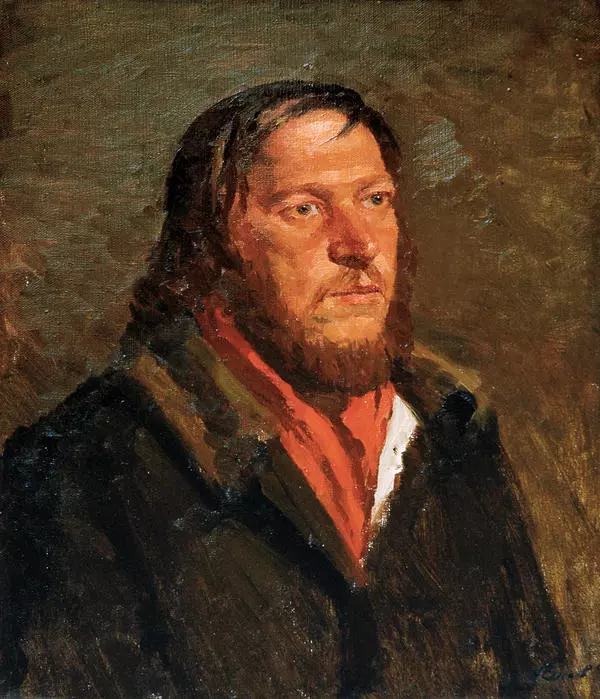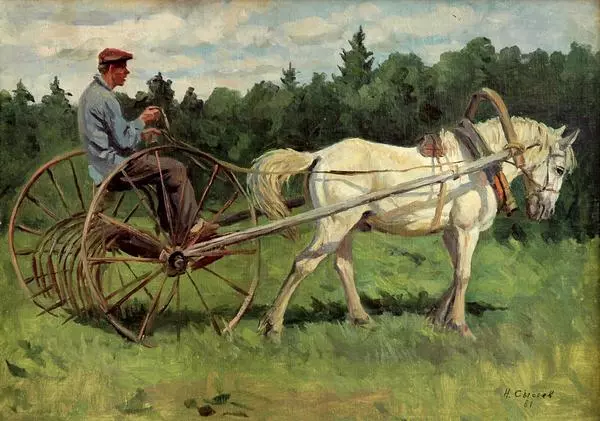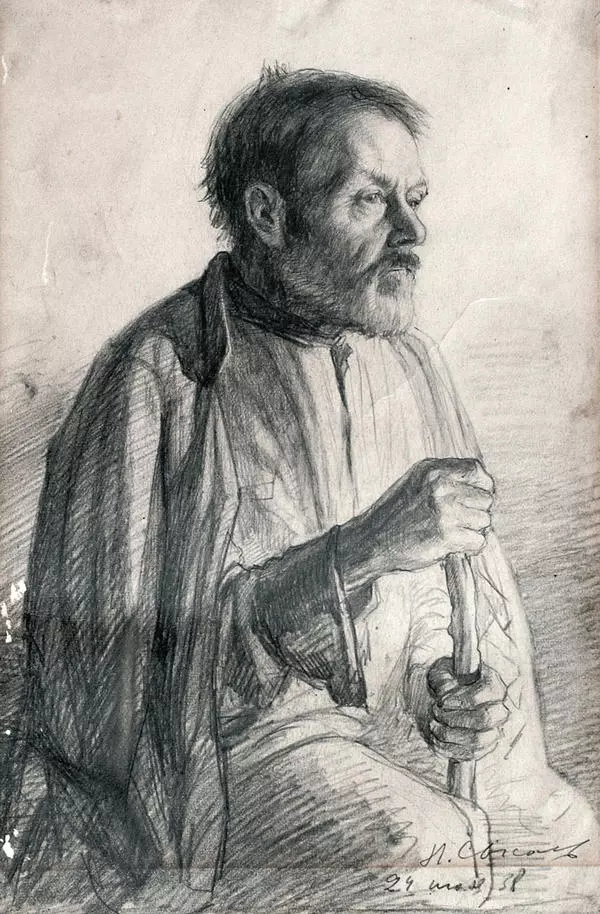The small oil painting sketch Young Homemaker by Nikolai Sysoev depicts a typical activity in the daily life of a rural girl — hand-milking a cow. The process is laborious and slow, but very important. Girls in villages used to learn this skill from a young age. Now this method of milking is only used in small farms.
Genre art was had a special place in Sysoev’s work. Such paintings reveal the life and daily routine of simple rural workers, a theme very close to the artist. A distinctive feature of these works is their naturalness. There is nothing “deliberate” about them. The characters Sysoev portrays do not pose, they are busy with their everyday activities. It is as if we are quietly observing them. The girl in the picture does not pay attention to the artist, she simply goes about her duties in a calm and measured way. Not only was Sysoev able to capture what he saw in life, but he was also able to convey the psychological state of the characters, the essence of their lifestyles, noting all the small details. In his interviews, the artist would often say that the artist’s job is to not only to capture the likeness of the model, but also convey how he/she feels about her.
Nikolai Sysoev was a keen colourist. This much is evident from his copious use of shades of green to draw the hay; how he uses colour to build volume and create light and dark; and how scenic the wall of the shed behind the cow is. At first sight, we notice that the girl’s blouse is red, and that the wall behind the cow has a pleasant unpainted wood colour. But if you take a closer look, you will notice that each element of the picture is painted in many colours and shades. The artist possessed a special talent of being to make colours blend, work together and, as a result, give a full impression of the object he was depicting.
The artist had an intimate knowledge of what rural life was like, as he was born and raised in a village. After graduating from a fine arts institute, he lived among ordinary villagers. The artist owned a workshop in Moscow yet spent most of his time in the village of Gorodok in Tver Region, where he took care of household duties. “He knew how to mow a plot, dry and harvest the hay and dig up potatoes. He also knew how to do other activities typical of rural life, because the villagers were his inspiration for characters in the paintings, ” recalls Nikolai Solomin, People”s Artist of the Russian Federation.
Genre art was had a special place in Sysoev’s work. Such paintings reveal the life and daily routine of simple rural workers, a theme very close to the artist. A distinctive feature of these works is their naturalness. There is nothing “deliberate” about them. The characters Sysoev portrays do not pose, they are busy with their everyday activities. It is as if we are quietly observing them. The girl in the picture does not pay attention to the artist, she simply goes about her duties in a calm and measured way. Not only was Sysoev able to capture what he saw in life, but he was also able to convey the psychological state of the characters, the essence of their lifestyles, noting all the small details. In his interviews, the artist would often say that the artist’s job is to not only to capture the likeness of the model, but also convey how he/she feels about her.
Nikolai Sysoev was a keen colourist. This much is evident from his copious use of shades of green to draw the hay; how he uses colour to build volume and create light and dark; and how scenic the wall of the shed behind the cow is. At first sight, we notice that the girl’s blouse is red, and that the wall behind the cow has a pleasant unpainted wood colour. But if you take a closer look, you will notice that each element of the picture is painted in many colours and shades. The artist possessed a special talent of being to make colours blend, work together and, as a result, give a full impression of the object he was depicting.
The artist had an intimate knowledge of what rural life was like, as he was born and raised in a village. After graduating from a fine arts institute, he lived among ordinary villagers. The artist owned a workshop in Moscow yet spent most of his time in the village of Gorodok in Tver Region, where he took care of household duties. “He knew how to mow a plot, dry and harvest the hay and dig up potatoes. He also knew how to do other activities typical of rural life, because the villagers were his inspiration for characters in the paintings, ” recalls Nikolai Solomin, People”s Artist of the Russian Federation.
